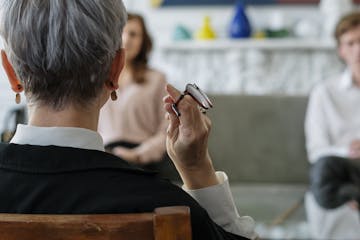Art therapy is a form of therapy that integrates the creative and artistic process into the therapeutic process. Using a variety of artistic mediums such as painting, drawing, sculpture, collage, dance and music, art therapy offers people a space to explore their thoughts, emotions and experiences in a non-verbal way. Over the decades, art therapy has proven to be beneficial for a wide range of individuals, providing a unique form of expression, self-exploration, and healing. In this article, we will explore the four main benefits of art therapy and how it can help improve people's mental and emotional health.
1. Emotional Expression
One of the main advantages of art therapy is its ability to encourage emotional expression. Many people find it difficult to communicate their feelings through words, whether due to trauma, emotional blocks, or simply a lack of verbal skills. Art therapy provides these people with an alternative form of expression through art, allowing them to express their emotions visually and symbolically.
By using different artistic mediums, individuals can represent their emotions in a unique and staff. For example, someone experiencing anxiety may paint an abstract painting with quick strokes and intense colors to express their inner turmoil, while another person dealing with loss may create a sculpture that symbolizes their grieving process. This creative freedom gives the individual the opportunity to explore their feelings in a non-threatening and deeply meaningful way.
1.1. Releasing Repressed Emotions
Art therapy can also be especially helpful for those people who have repressed their emotions for a long time. Through the creative process, they are encouraged to channel and release those repressed emotions in a safe and controlled manner. This gradual release of emotions can help reduce stress, anxiety and depression, as well as improve self-acceptance and self-esteem.
2. Self-exploration and Self-knowledge
Another important benefit of art therapy is its ability to encourage self-exploration and self-knowledge. By participating in artistic activities, people can access parts of themselves that might otherwise remain hidden or unknown. Art acts as a mirror that reflects a person's inner thoughts, feelings, and beliefs, allowing them to closely examine their inner world.
Through artistic creation, individuals can reflect on their past experiences, relationships, and relationships. , their fears and their deepest desires. This guided self-exploration can help people better understand who they are, what motivates them, and what they need to grow and heal. Additionally, art therapy can encourage introspection and self-reflection, which contributes to personal development and emotional well-being.
2.1. Developing Self-Esteem and Confidence
As individuals explore and express their thoughts and feelings through art, they can also strengthen their self-esteem and self-confidence. By viewing their artistic creations as tangible manifestations of their inner world, people can feel validated and empowered in their ability to communicate and be understood.
In addition, art therapy encourages unconditional self-acceptance and promotes idea that there are no "right" or "wrong" answers in art. This lack of judgment allows people to experience the freedom to be themselves and express themselves authentically, which in turn strengthens their self-esteem and self-confidence.
3. Stress and Anxiety Reduction
Art has the power to be therapeutic in itself, and art therapy is an effective way to reduce stress and anxiety. By immersing themselves in the creative process, people can temporarily disconnect from their everyday concerns and focus on the present moment. The concentration required to create art can act as a form of moving meditation, calming the mind and promoting relaxation.
In addition, art therapy has been shown to be useful in regulating physiological responses to stress, such as decreased heart rate and reduced levels of cortisol, the stress hormone. By participating in artistic activities, people can experience a sense of calm and well-being, allowing them to release tension accumulated in the body and mind.
3.1. Promoting Mindfulness and Presence
Art therapy can also promote the practice of mindfulness and conscious presence. By being completely immersed in the creative process, people can experience a state of flow in which they lose track of time and focus fully on the task at hand. This mindfulness in the present moment can help reduce mental rumination, improve mental clarity, and promote a sense of calm and inner balance.
4. Fostering Creativity and Innovation
Finally, art therapy encourages creativity and innovation by giving people a safe space to explore their imagination and experiment with new forms of expression. Through art, people can develop their ability to think creatively, solve problems in unconventional ways, and find new perspectives on their lives and circumstances.
In addition, art therapy can be especially beneficial for those people looking to increase their creativity in other areas of their lives. By developing their ability to create art freely and without restrictions, individuals can unlock new ideas, approaches and innovative solutions that they can apply to everyday and professional situations.
4.1. Encouraging Lateral Thinking
Art encourages lateral thinking, that is, the ability to find creative solutions to complex problems by exploring different perspectives and approaches. Art therapy encourages lateral thinking by challenging people to think abstractly, symbolically, and non-linearly, which can lead to profound insights and discoveries.
In summary, art therapy offers a variety of benefits for people's mental and emotional health by encouraging emotional expression, self-exploration, stress reduction, creativity and innovation. Through the integration of art and therapy, art therapy has become a powerful tool for healing emotional wounds, promoting personal growth, and improving quality of life. If you are looking for a unique and creative way to address your emotional challenges, art therapy could be the solution you are looking for.
Author: Psicólogo Rafael Gómez


